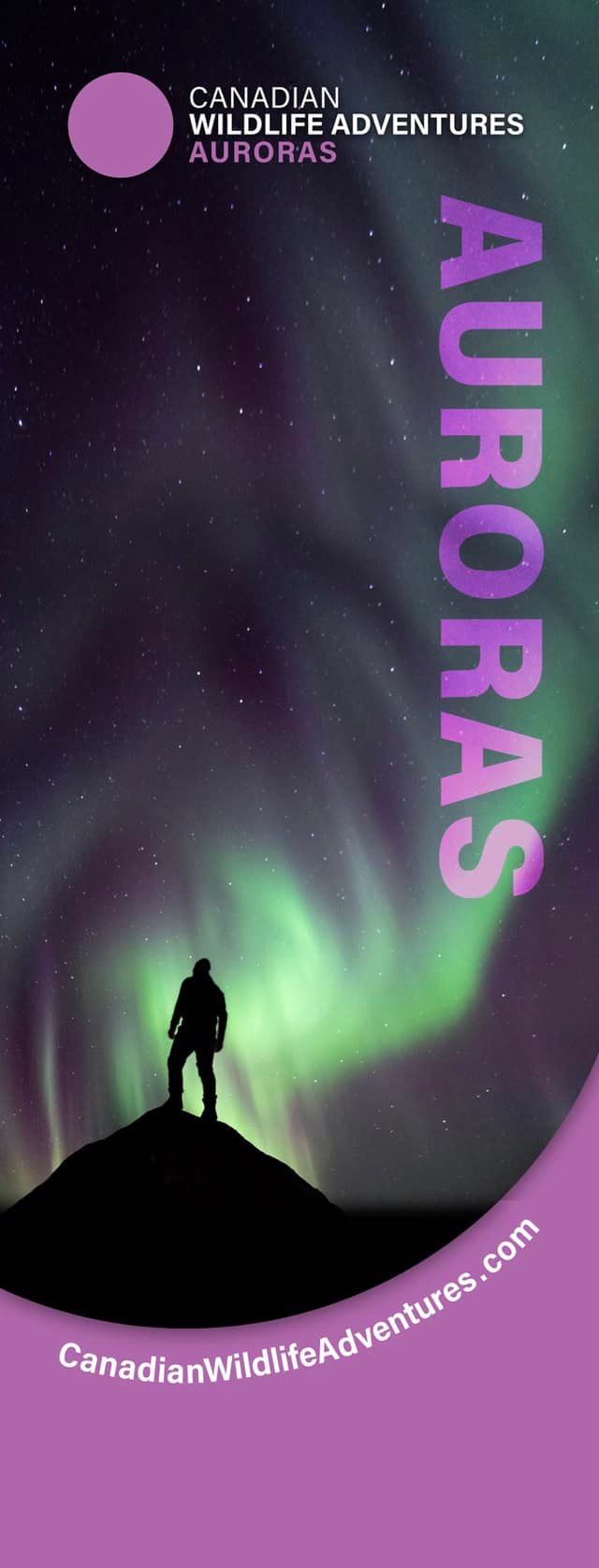
Canadian Wild Life Adventures – AURORAS
Dancing beams of colors light up the night and shine brightly -without any competition from light pollution of the city’s glare.
Aurora Borealis Tours
THE PARTNERSHIP Between Earth and Sky
The homeland of Canadian Wildlife Adventures is Canada’s beautiful barrenlands . We are located above the tree line – and that factors in huge when it comes to the northern lights, or Aurora Borealis. This term was coined by Galileo in 1619, from the Roman Goddess of the Earth and the Greek name for the north wind. You probably know the far north is known as the Land of the Midnight Sun – and if you’re with us anytime from June to mid-August, you will see for yourself what it’s like to experience almost 24 hours of daylight – every day.
After mid-August, the show is on and you will see nature’s beauty. Then, nature shifts her time clock and brings back the darkness each day. And with that change, we herald the arrival of the Aurora Borealis. It is a breathtaking dance of lights and colors in the night sky – and you are in one of the best places in the world to see them up close. This is a bonus attraction for all of our later season guests – and we’ll show you how to get the most from viewing opportunities.
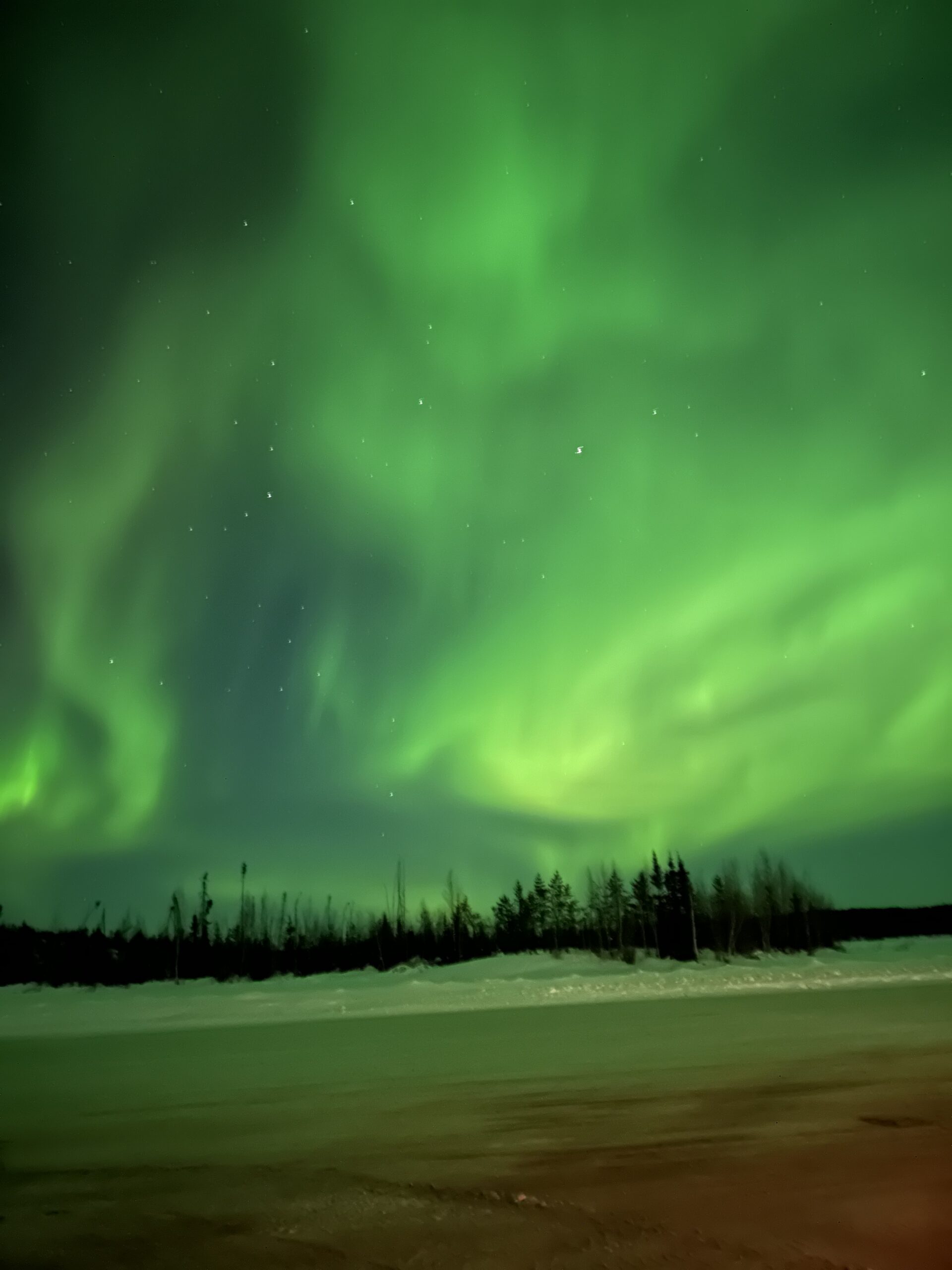
What Causes the Aurora?
The sun sends out electrically-charged particles called ions, which move away from the Sun in a stream of plasma (ionized gas) known as the solar wind. When this plasma comes in contact with the Earth’s magnetic field, it agitates the ions, causing them to move around the Earth. However, some of the ions become trapped and then interact with the Earth’s ionosphere (an average of 60-80 miles above the surface), causing the ions to glow. This is the same principal as how a neon sign lights up.
The Aurora are constantly changing and moving in streams of light or curtains, because the process of how the Sun’s ionized gas interacts with the Earth’s magnetic field is very dynamic. Although harmless to life on Earth, the Aurora can cause power disruptions in satellite communications and in radio/TV broadcasts.

Aurora DISPLAYS
The northern latitudes see the greatest occurrence of the Aurora. In the northern hemisphere, there is a 50% or greater chance of seeing Aurora roughly between the latitudes of 55 to 80 degrees north. This means in general that in these latitudes, the Aurora should occur on at least half of the nights throughout the year. However, this also varies. Aurora displays usually increase during times of the period known as solar maximum. They also usually show a greater frequency during the winter months, where the nights are longer and the skies generally void of haze.
Although most common in the northern latitudes, the Aurora have been occasionally seen south of 35 degrees north latitude which encompasses the far southern United States. Displays this far south can occur when a large coronal mass ejection from the Sun creates a huge geomagnetic storm in the Earth’s outer atmosphere.
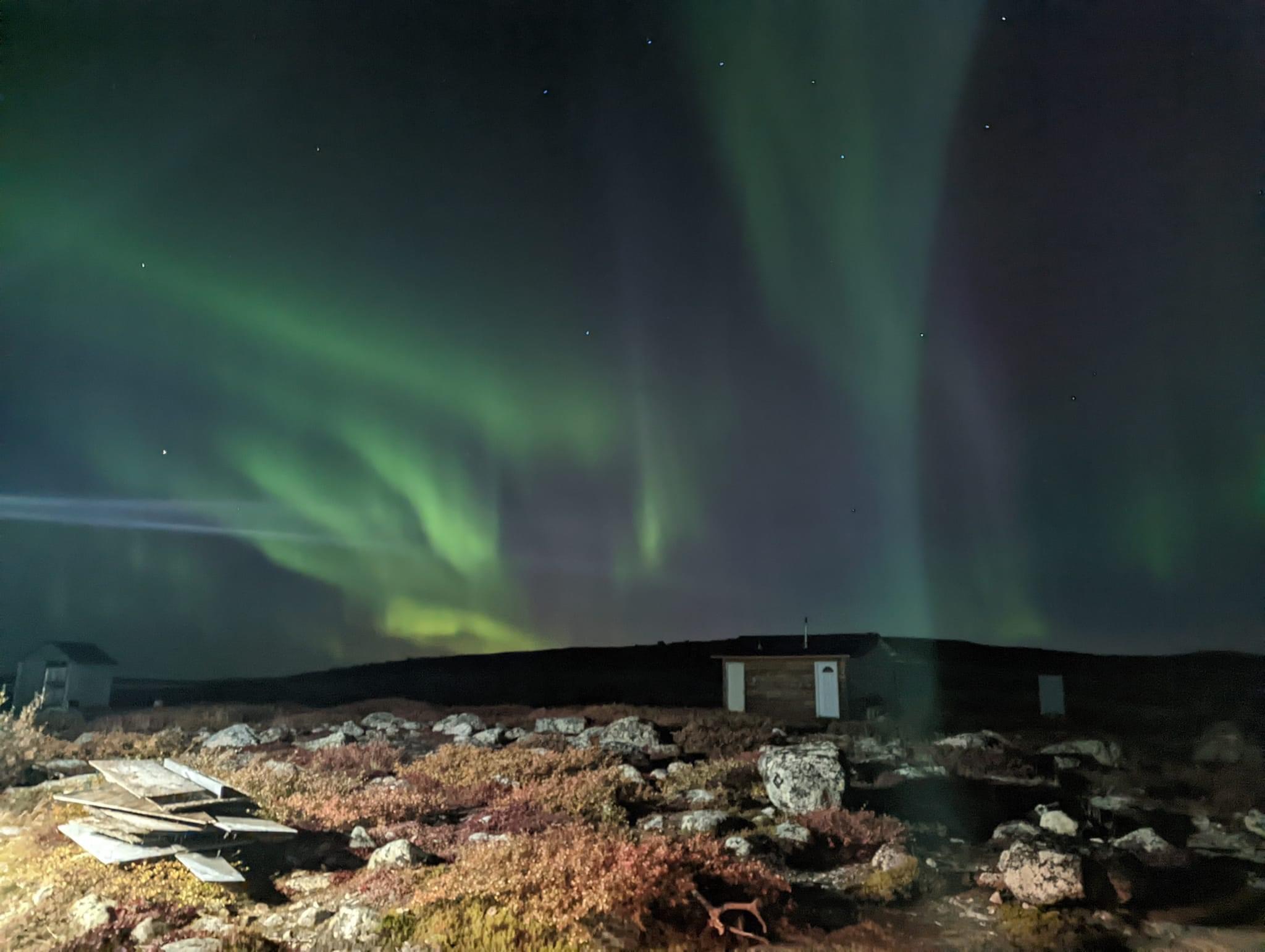
COLOURS OF THE Aurora BOREALIS
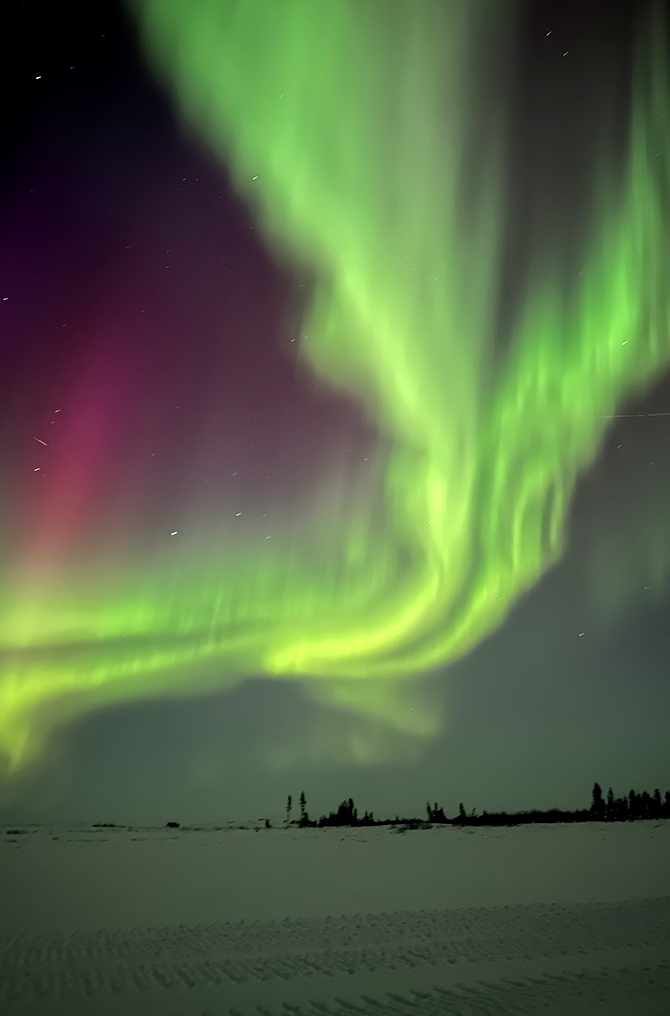
Yellow & Pink
These are a combination of red and green or blue. Other shades of red, as well as orange, may be seen on rare occasions, while yellow-green is fairly common
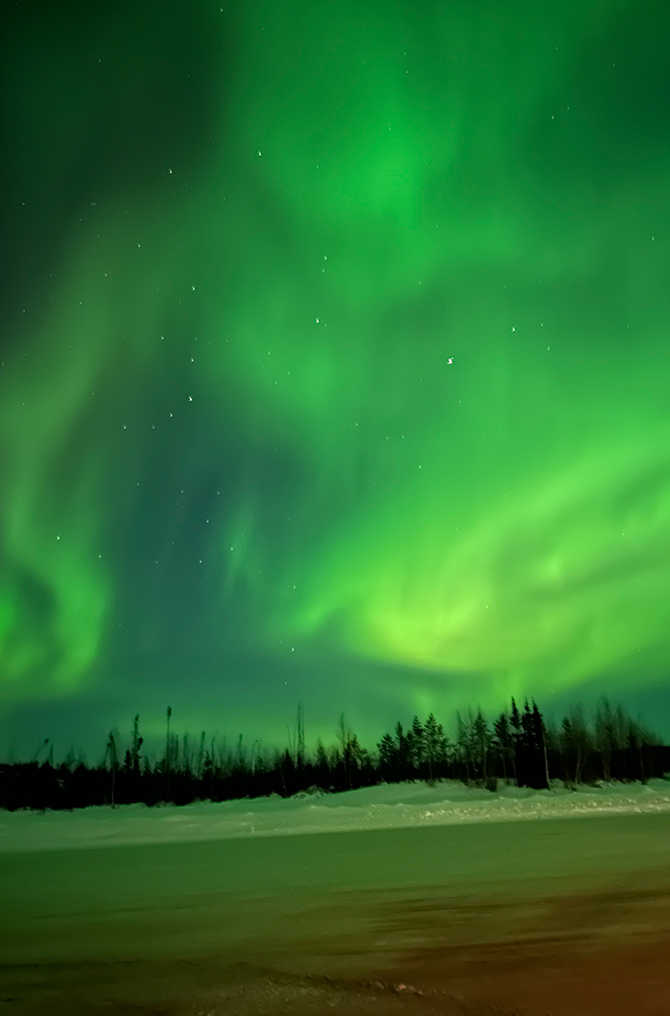
GREEN
At lower altitudes, the more frequent collisions suppress the red mode, so the green dominates. A fairly high concentration of atomic oxygen and higher eye sensitivity in green make them the most
common.
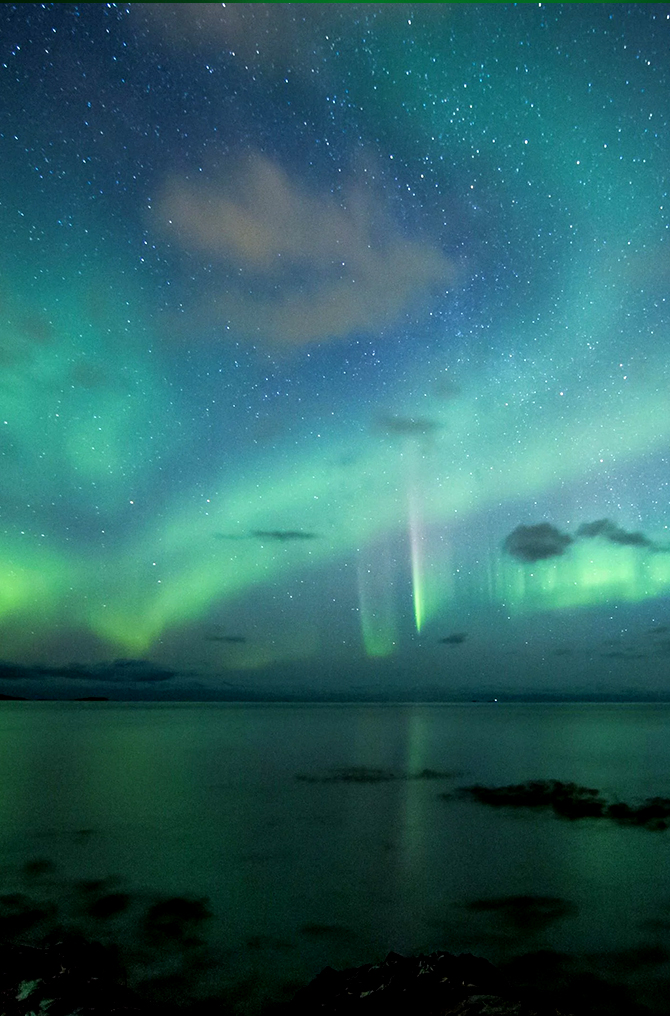
BLUE
At lower altitudes, molecular nitrogen and ionized molecular nitrogen take over in producing visible light emission, radiating at in both red and blue parts of the spectrum, with blue being dominant. Blue and purple emissions, typically at the lower edges of the “curtains”, show up at the highest levels of solar activity. The molecular nitrogen transitions are much faster than the atomic oxygen ones.

RED
This color is almost a rarity, as it is visible only under more intense solar activity. The most oftenHOME seen hues of red for the auroras are scarlet, crimson, and carmine.




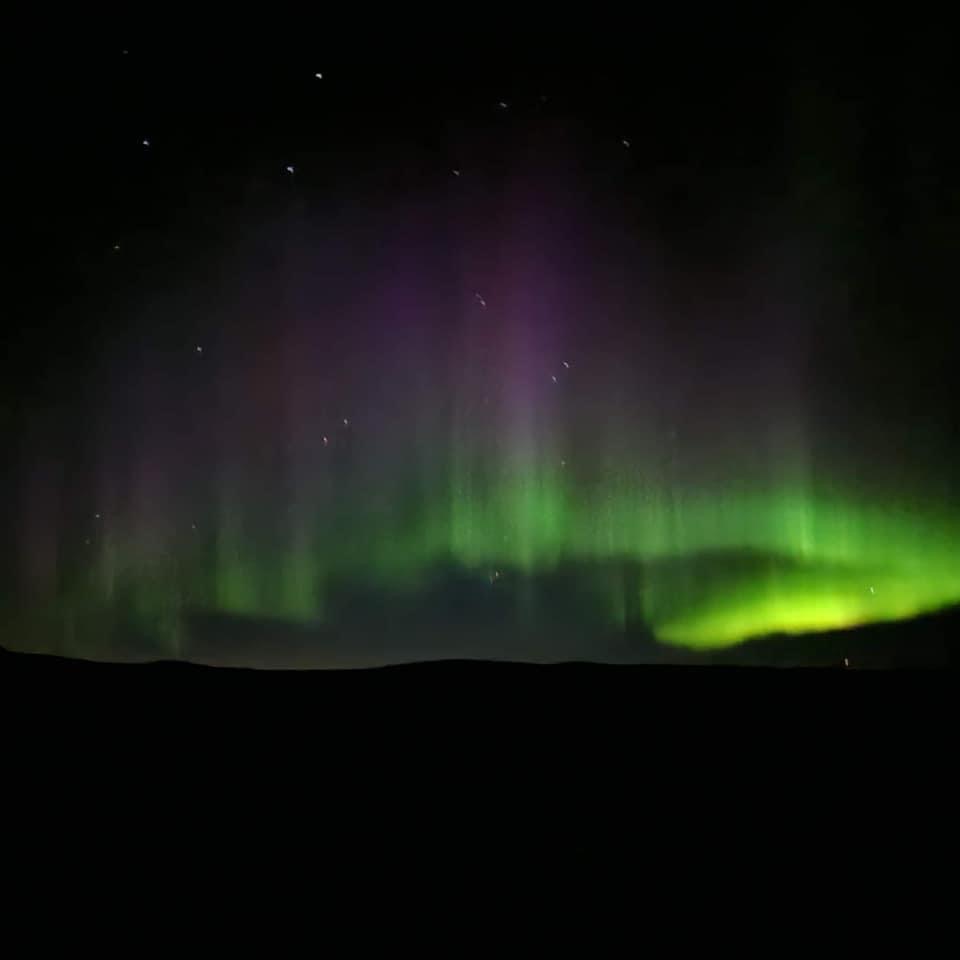
YOU’VE GOT A LOT TO LOOK FORWARD TO…
Make sure you are prepared for shooting the Aurora. Here are some helpful links that will provide you with tips for enhancing the opportunity.
The Aurora Borealis Tour
Why us for your Aurora Borealis tour?
We are remote, the only way into our lodges is by float plane. We are the only Lodge on the lake. This means we are completely removed from light pollution. The nights are ink black which creates the perfect backdrop for when the Aurora Borealis lights up the skies. The stars are brighter and the Northern lights are brighter in contrast to when you have light pollution diluting the darkness. The day starts with breakfast at 7:00 AM until 8:30 AM a meeting on the days activities is held. You will head out with your bagged lunches and snack, thermoses and water for the day, unless you are hiking around the lodge and you may return to the lodge for lunch. You will end your day back at the lodge at 6:00 pm with supper served at 7:00pm. After supper you will relax, read, there are games to play, socializing about your day, and you may elect to take a siesta while you wait for the skies to light up with the Aurora Borealis displays.
What to Expect?
During the daytime, you are out travelling the waterways, fishing and hiking afford you excellent opportunities to see the animals in their natural habitat. All day long your senses will be assaulted with the beauty of the vibrant fall colours of red, orange, and yellow shimmering as far as the eye can see. On your hikes you will see hundreds of mushrooms, and the fruits of the tundra which include cloud berries, blueberries, and cranberries. After supper you might want to grab a siesta. The Aurora Borealis activity starts later into the night. Once the sky show begins time seems to stand still as you watch the Aurora Borealis light up the skies.

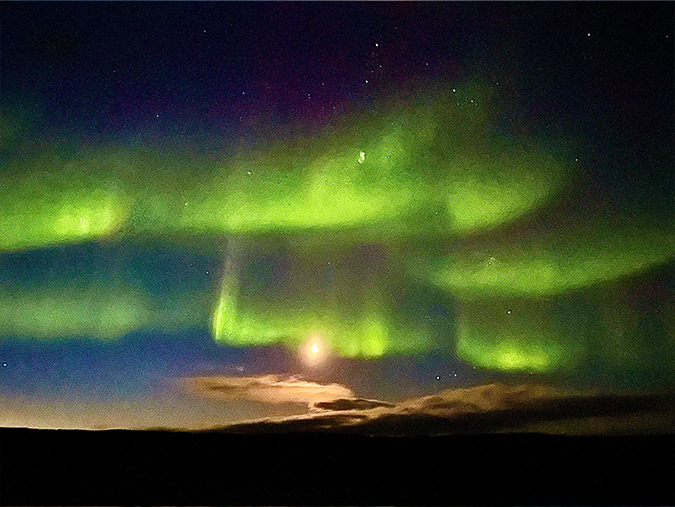


YOUR INVESTMENT IN ADVENTURE
AURORA BOREALIS 6-day 7-Night OUTING
$5,500.00 USD plus 5% Goods and Services Tax (GST)
PRICING IS IN USD – PRICING IS BASED PER PERSON – MAXIMUM 10 ADVENTURERS IN CAMP.
Prices are subject to change, but are LOCKED IN at Booking.
What’s included:
Float Plane Flight from Yellowknife to Aylmer Lake lodge
Lodging
Guide
meals
Housekeeping
Laundry Service
wi-fi
use of lodge equipment / lures *
*Lost or broken equipment/lures are payable by the guest.
What’s NOT included:
Commercial Flight/Travel to Yellowknife from Home Base
*If you elect to leave lodges or remote locations for other, than scheduled flights it’s at your cost to charter a flight out. The charters require credit card payment be paid before flight leaves the airport.
licenses (If you choose to fish)
gratuities
Hotel Stay Before and After Your Trip
Fuel Surcharges
Due to fluctuating fuel costs, a fuel surcharge maybe applicable
Medical Evacuation + Canellation Insurance
we use Global Rescue. Please visit our website for our booking with Global Rescue it is in USD. Cancellation insurance or emergency fly out health insurance we suggest Global Rescue
FAQ
Frequently Asked Questions
Is there internet / Wifi Available?
While we pride ourselves on being super remote and in tune with nature we do have satellite internet available at our main lodge at Aylmer Lake.
What do I need to bring?
It depends on your chosen adventure. We have provided lists for potential items that our other adventurers have been grateful to bring to make their trip that much more enjoyable. Please reference your chosen adventure page for more details.
How do we get to the lodge?
Aylmer Lake Lodge is only accessible by private float plane. There are no roads - just remote wild Tundra terrain and vast lakes and waterways surrounding the area.
